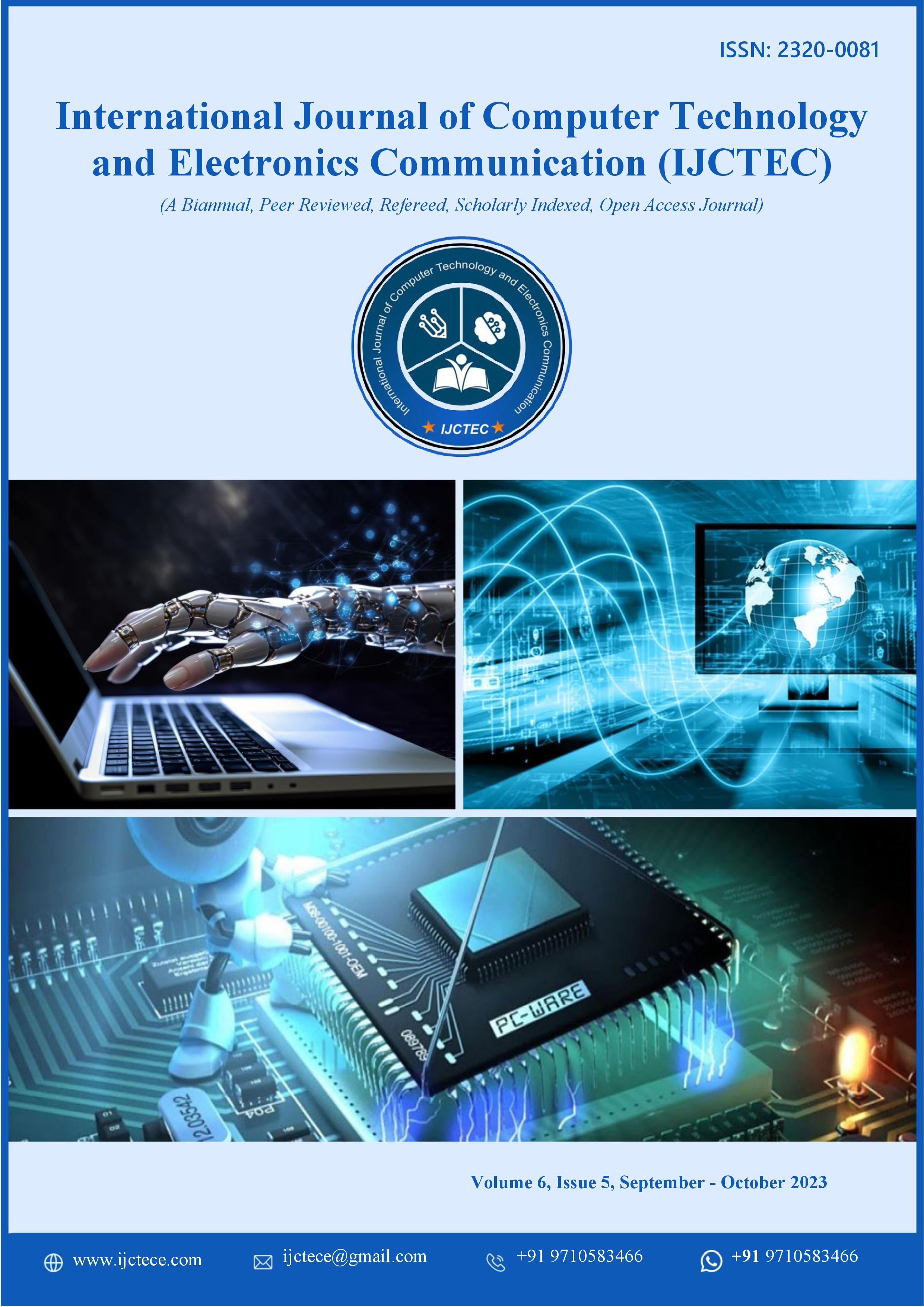AI-Driven Software Ecosystem Engineering with Oracle E-Business Suite: Interpretable Machine Learning for Cloud-Based Data Security and Firewall Rule Optimization
DOI:
https://doi.org/10.15680/IJCTECE.2023.0605006Keywords:
Oracle E-Business Suite, interpretable machine learning, cloud security, firewall rule optimization, database security, MLOps, explainable AI, role-based access control, anomaly detection, complianceAbstract
Enterprises running Oracle E-Business Suite (EBS) increasingly migrate components and integrations to cloud environments, creating new opportunities — and new risks — for data security, configuration drift, and network-level exposure. This paper presents an AI-driven software-ecosystem engineering approach that integrates interpretable machine learning for (1) anomaly detection in access patterns to EBS modules and databases, (2) automated firewall rule optimization to reduce attack surface while preserving business connectivity, and (3) cloud-native data security patterns (encrypted indices, fine-grained RBAC audits, and policy-as-code enforcement). The proposed ecosystem couples EBS telemetry (audit logs, JDBC/OCI connection traces, application logs) with cloud network metadata and identity/access events to build a feature store that powers lightweight, explainable models (decision trees, rule lists, SHAP-annotated ensembles) suitable for security operations (SecOps) and application teams. A rule-synthesis engine translates model outputs into candidate firewall changes (allow/deny refinements, port consolidations, and zone tightening) and ranks them by estimated business impact and risk reduction, while automated safety checks ensure no disruption to production flows.
We describe an engineering blueprint for integrating these capabilities into an Oracle EBS estate: non-invasive telemetry collectors, a model development lifecycle emphasizing interpretability and human validation, canary deployments for firewall rule proposals, and automated rollback/playbooks tied to observability. Evaluation uses a mixed methodology: retrospective attack/simulation replay on de-identified EBS logs, live shadow deployments in staging environments, and a limited production pilot with human-in-the-loop approval. Expected outcomes include measurable reduction in overly permissive rules, earlier detection of anomalous EBS access patterns, and maintenance of application availability. We discuss trade-offs: false positives from aggressive rule tightening, the need for continuous model governance to manage drift, and the operational cost of telemetry and rule verification. The contribution is a practical, interpretable AI pipeline for securing Oracle EBS in cloud settings that aligns SecOps automation with application availability and compliance requirements.
References
1. Avancha, S., Baxi, A., & Kothari, A. (2016). Privacy in mobile technology for personal healthcare. IEEE Security & Privacy, 14(3), 10–18.
2. Sasidevi Jayaraman, Sugumar Rajendran and Shanmuga Priya P., “Fuzzy c-means clustering and elliptic curve cryptography using privacy preserving in cloud,” Int. J. Business Intelligence and Data Mining, Vol. 15, No. 3, 2019.
3. Gosangi, S. R. (2022). SECURITY BY DESIGN: BUILDING A COMPLIANCE-READY ORACLE EBS IDENTITY ECOSYSTEM WITH FEDERATED ACCESS AND ROLE-BASED CONTROLS. International Journal of Research Publications in Engineering, Technology and Management (IJRPETM), 5(3), 6802-6807.
4. Gonepally, S., Amuda, K. K., Kumbum, P. K., Adari, V. K., & Chunduru, V. K. (2021). The evolution of software maintenance. Journal of Computer Science Applications and Information Technology, 6(1), 1–8. https://doi.org/10.15226/2474-9257/6/1/00150
5. Chen, T., He, T., & Li, H. (2019). Interpretable machine learning for security operations: methods and practice. Proceedings of the Applied Security Conference, 112–127.
6. CHAITANYA RAJA HAJARATH, K., & REDDY VUMMADI, J. . (2023). THE RISE OF INFLATION: STRATEGIC SUPPLY CHAIN COST OPTIMIZATION UNDER ECONOMIC UNCERTAINTY. Turkish Journal of Computer and Mathematics Education (TURCOMAT), 14(2), 1115–1123. https://doi.org/10.61841/turcomat.v14i2.15247
7. Cox, M., & Ramaswamy, R. (2018). Network policy optimization using flow analysis. IEEE Transactions on Network and Service Management, 15(4), 1420–1432.
8. Dutt, A., & Sinha, P. (2021). Explainable models in security operations: improving analyst trust. ACM Computing Surveys, 53(6), 118.
9. Gartner, Inc. (2020). Market guide for cloud security posture management. Gartner Research.
10. Hajjat, M., & Bhargava, B. (2017). Application-aware firewall rule management: a practical approach. IEEE Communications Magazine, 55(5), 144–151.
11. Hinton, G., & Weinberger, K. (2018). Model governance and lifecycle for enterprise ML. Journal of Machine Learning Operations, 1(2), 34–49.
12. Narapareddy, V. S. R., & Yerramilli, S. K. (2021). SUSTAINABLE IT OPERATION SYSTEM. International Journal of Engineering Technology Research & Management (IJETRM), 5(10), 147- 155.
13. Venkata Ramana Reddy Bussu,, Sankar, Thambireddy, & Balamuralikrishnan Anbalagan. (2023). EVALUATING THE FINANCIAL VALUE OF RISE WITH SAP: TCO OPTIMIZATION AND ROI REALIZATION IN CLOUD ERP MIGRATION. International Journal of Engineering Technology Research & Management (IJETRM), 07(12), 446–457. https://doi.org/10.5281/zenodo.15725423
14. Kantarcioglu, M., & Park, J. (2020). Auditable logging and forensic readiness in cloud applications. International Journal of Digital Forensics & Incident Response, 31, 100311.
15. Manda, P. (2022). IMPLEMENTING HYBRID CLOUD ARCHITECTURES WITH ORACLE AND AWS: LESSONS FROM MISSION-CRITICAL DATABASE MIGRATIONS. International Journal of Research Publications in Engineering, Technology and Management (IJRPETM), 5(4), 7111-7122.
16. Li, F., & Chen, Y. (2019). Mining firewall rules from historical flows using constraint solvers. Proceedings of the Network and Distributed Systems Security Symposium, 2019.
17. Lipton, Z. C. (2018). The mythos of model interpretability. Communications of the ACM, 61(10), 36–43.
18. NIST. (2018). Framework for Improving Critical Infrastructure Cybersecurity. National Institute of Standards and Technology.
19. Azmi, S. K. (2021). Delaunay Triangulation for Dynamic Firewall Rule Optimization in Software-Defined Networks. Well Testing Journal, 30(1), 155-169.
20. Balaji, K. V., & Sugumar, R. (2022, December). A Comprehensive Review of Diabetes Mellitus Exposure and Prediction using Deep Learning Techniques. In 2022 International Conference on Data Science, Agents & Artificial Intelligence (ICDSAAI) (Vol. 1, pp. 1-6). IEEE.
21. Oracle Corporation. (2020). Oracle E-Business Suite Security Guide (Release 12.2). Oracle Documentation.
22. Sangannagari, S. R. (2022). THE FUTURE OF AUTOMOTIVE INNOVATION: EXPLORING THE IN-VEHICLE SOFTWARE ECOSYSTEM AND DIGITAL VEHICLE PLATFORMS. International Journal of Research and Applied Innovations, 5(4), 7355-7367.
23. Amuda, K. K., Kumbum, P. K., Adari, V. K., Chunduru, V. K., & Gonepally, S. (2021). Performance evaluation of wireless sensor networks using the wireless power management method. Journal of Computer Science Applications and Information Technology, 6(1), 1–9.
24. Sugumar, Rajendran (2019). Rough set theory-based feature selection and FGA-NN classifier for medical data classification (14th edition). Int. J. Business Intelligence and Data Mining 14 (3):322-358.
25. Sweeney, L., & Malin, B. (2019). Data minimization and retention strategies for secure auditing. Journal of Privacy and Confidentiality, 9(1), Article 3.


